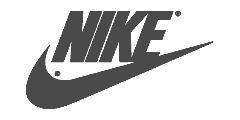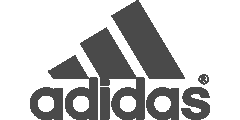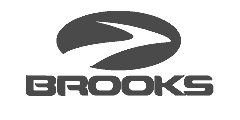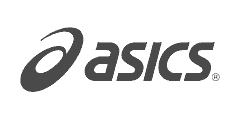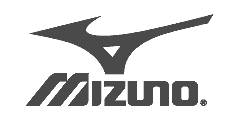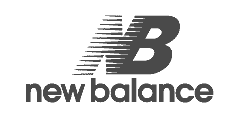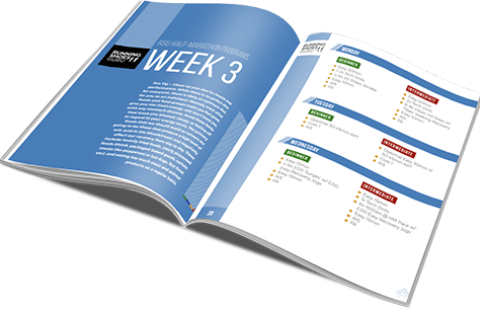Reebok Nano X1 Intro
Reebok’s ‘Official Shoe of Fitness’ is here, and in its 11th version, the Nano X1 has had quite the facelift.
Outside of the aesthetics, the biggest changes are found in the upper material (now with a choice of Flexweave Knit or Flexweave Grit), the Floatride Energy midsole, and external heel counter.
All these changes have led to a 23% reduction in weight, and pretty much a whole new shoe.
All the extras from the Nano X have gone, to leave a stripped down training shoe, designed to deliver a stable base for lifts and more cushioning than ever for running and plyometrics during your gym workouts.
Reebok Nano X1 First Impressions

Reebok Nano X1 – Pair
Before even opening the box, you can tell the Nano X1 is different to its predecessors.
The box design lacks the official CrossFit branding (as did the Nano X) to appeal to a broader range of athletes who are training in various ways, outside of running.
The shoe is also noticeably much lighter (275g/ 9.7oz for a women’s UK Size 6) than previous iterations, which, if you’ve read my Nano X review, was pretty much my only complaint with the shoe.
So I had high hopes and expectations of the Nano X1 being my DREAM training shoe… but did the stars align and I get my wish?
Whilst we’re all cooped up at home in UK lockdown #3, the Nano X1’s first outing was a full day of wearing them around my house.
I’m always a tad dubious about sizing on the Nano’s, as I wear half a smaller size than all of my other running and training shoes.
When a new version is released, especially the odd numbered versions where the shoe is majorly overhauled, I worry they may become true to size and what I’ve ordered is too small.
Again, this was not the case, and the Nano X1 in a UK size 6 (EU 39/ US Women’s 8.5) was the right fit, if a little shorter than the Nano X.
Compare this to Nike Metcon’s where I wear a UK 6.5 (EU 40.5/ US Women’s 9) and running shoes where I wear a UK 6.5 or 7 (EU 40.5/ US Women’s 9).
Also to note on the fit, the toe box is wide, as with all Nano’s to give plenty of room for the toes to splay when lifting.
But noticeably narrower than other versions, so if you have a narrower foot, the Nano X1 could be your best bet for a good fit.

Reebok Nano X1 – Closeup
During this time breaking the shoe in I could feel the differences and changes that had been made in the upgrade. Most noticeably, the heel collar.
This now angles in towards the back of the ankle and caused an irritation on my skin, something which I hoped would soften over time.
Other than that the shoe was comfortable, breathable and I was looking forward to putting it through its paces.
Looks-wise my first impression of the Nano X1 is that it falls abit flat. 80% of launch colorways for men and women follow a black/ white/ grey color scheme, and lack the fun retro design quirks we’ve seen in previous launches.
The Reebok vector logo is subdued, and the main shoe feature standout is the plastic TPU heel clip which visually I’m not a fan of, although you may be.
Maybe we’ll see more exciting colorways and limited edition launches over the coming months.
The new upper feels soft, stretchy and breathable with many holes for ventilation, and overlays or a denser knit where needed for durability. On the foot the toes feel airy and comfortable, like wearing a loose pair of socks.
The popular ropepro wrap is also back to protect the shoe and foot, and high heel counter and tongue to keep the foot locked down and secure.

Reebok Nano X1 – Top
When first putting the shoe on it took a while to get the tongue in place properly, with it moving and slipping down to the side until I’d tightened the laces much more than I would normally.
After this, the tongue did stay in place, but felt quite narrow, and there was no loop to connect the tongue to the laces which features on many running shoes. The heel counter felt firm, rising high up the back of the ankle.
On the foot, there is one major noticeable change, and this is the new heel drop of 7mm.
According to Tal Short (Reebok’s Senior Product Manager) this was the most tested element of the Nano X1’s and has been incorporated with the purpose of increasing overall comfort and ‘runability’ of the shoe.
Add this to the higher midsole stack height, floatride foam, and knit upper and you get the look and feel much more of a running shoe than ever before.
As I knew about this new drop before trying them on, I was looking out for it, and I can’t say its mega noticeable to begin with, although this opinion changed when training in the Nano X1.
Overall, a much different feel to what I’ve been used to in previously for both Nano’s and Metcons, and more similar to that of the Puma XT Zone, and Reebok HIIT training shoes.
Reebok Nano X1 Sole Unit

Reebok Nano X1 – Sole
There are 2 big changes in the sole unit in the Nano X1. Firstly the 7mm heel to toe drop, and secondly, the floatride foam under the forefoot.
If we look first at the new heel drop (+3mm versus all previous versions) this takes the Nano X1 much closer to the feel of a more traditional running shoe.
Not only does this benefit running, akin to a rocker style of sole in a running shoe, it also elevates the heel to assist mobility when it comes to squatting.
As mentioned I didn’t notice a huge difference when first trying the Nano X1 on, but when training in it I didn’t love the new heel drop. The main difference seems to be in the forefoot and this is where the shoe is let down.
The reason all other Nano’s (and most training shoes) have a lower heel to toe drop is to enable to feet to feel the ground, and toes to grip for a the most powerful upward force possible to be generated when lifting.
In the Nano X1, the foot feels slightly less stable, and slides forward when your center of gravity changes.
I also found when doing squats, it was difficult to get the feet of the floor over the whole foot, with the feeling of my toes floating in the air, unable to make contact with the ground.
Over time I got a little more used to this more, but don’t love this upgrade.
Functionally this Floatride foam in the sole unit’s job is to absorb the ground contact when running or doing plyometrics such as box jumps, or skipping, whilst being present in a low amount so that it isn’t noticeable when lifting and thus create more instabilities.
If you’re squatting HEAVY we’d still recommend you go for a specific lifting shoe with a wooden sole and high heel to toe drop, but for 95% of athletes weightlifting in a gym, the Nano range will do the job.
The outsole is a durable rubber with a uniform lug pattern of mulitdirectional grip. Most colorways have a contrasting colour design under the heel of the shoe painted on to look abit like you’ve stepped on wet paint.
The outsole is flat, with shallow lugs, very much an indoor shoe, designed for gym workouts with a larger surface contact area for good grip and ground feel in the midfoot and under the heel.
My opinion on the sole is that falls short when it comes to performance when training vs other Nanos, and Nike Metcons.
Improvements in its functionality for running have seen it take backward steps in all other training modalities.
The curved rocker shaped sole at the forefoot reduces stability, making squatting feel less balanced, and the whole of the forefoot feels less supported.
Reebok Nano X1 Upper Unit

Reebok Nano X1 – Closeup
The Nano X1 upper comes in a choice of 2 different materials- Flexweave Knit (the majority of colorways) and Flexweave Grit which is a thicker, woven textile. I chose the Knit upper in white/ grey/ gum.
The flexibility in the upper is great, especially in the forefoot and overall I’m really impressed with the new knit material.
One concern was durability and how this would hold up versus more sturdy shoes, but there’ve been no issues to report yet.
Some weight has been cut on this shoe by reducing material and padding in the tongue, and is noticeably less structured and supported on the foot than I’d like.
My main gripe with the Nano X1 is the fit around the heel counter. The newly designed heel collar angles in towards the back of the foot and can really rub during a workout, and this didn’t soften over time.
The tongue is comfortably and adequately padded but shifts around a lot when working out, moving side to side and curling in down the length of the tongue.
The laces are long, and stayed tied well and the reinforces eyelets give a good midfoot feel.
The standout feature on the upper is the large external TPU heel clip. This gave the shoe good stability in the heel, wrapping around the back of the shoe, protecting the heel counter when doing handstand push ups.
Reebok Nano X1 Conclusion

Reebok Nano X1 – Heel
When it comes to performance, what we’ve seen previously in training shoes is the search to find a happy medium, compromising between stability for lifting and cushioning on a run.
Traditionally, Nano’s have leant hugely towards a wide, stable base, heavy lifting shoe. Any quite rightly, if you’re doing a lot of running, nothing beats a specialist running shoe.
But with CrossFit, and the ever growing popularity of HIIT workouts both in gyms, studios and at home, demands of a training shoe are leaning more towards being light, agile and multipurpose. So where in this market does the Nano X1 sit?
Due to it’s higher heel drop, and Floatride foam, I’d place it as less suitable for your heavy lifting CrossFit WOD or weightlifting barbell work, but highly suitable for your HIIT class, or any other gym workout.
There were just too many small elements I didn’t love about the shoe to put it up there with my favourites. This was mainly due to the fit (especially around the heel) and the instability in the forefoot.
If you’re looking for a shoe specifically for heavy lifting, stick with the Nano 9, X or Nike Metcon.
If weight is the number 1 priority for you in a training shoe the Nano X1 is versatile, and a great option. For a fantastic all rounder for your gym workout or classes, the Nano X1 could work very well for you.
It won’t be my go to training shoe, but I’ll keep it in mind for home workouts, over a session in the gym.
We purchased a pair of Reebok Nano X1 from reebok using our own money. This did not influence the outcome of this review, written after running more than 50 miles in them.
Reebok Nano X1 Price Comparison
This page contains affiliate links. As an Amazon Associate I earn from qualifying purchases.
